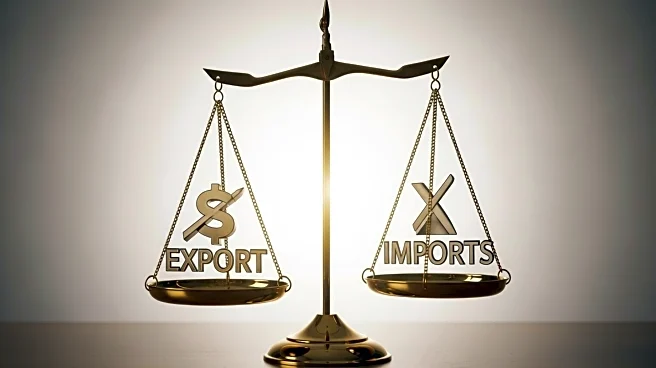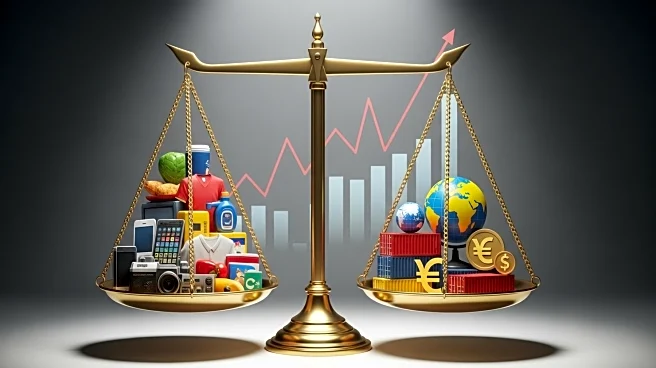What's Happening?
The U.S. current account deficit experienced a significant contraction in the second quarter, marking the largest decrease on record. According to the Commerce Department's Bureau of Economic Analysis, the deficit fell by $188.5 billion, or 42.9%, to $251.3 billion. This reduction follows a previous record high of $439.8 billion in the first quarter. The current account deficit measures the flow of goods, services, and investments into and out of the country. The decline was driven by a substantial decrease in goods imports, which fell by $184.5 billion to $820.2 billion. This reduction included decreases in nonmonetary gold, consumer goods, and industrial supplies and materials, such as crude oil. Meanwhile, imports of services rose by $2.8 billion, with increases in technical, trade-related, and other business services. Goods exports increased by $11.3 billion to $550.2 billion, while exports of services advanced by $2.1 billion to $301.6 billion.
Why It's Important?
The sharp reduction in the U.S. current account deficit has significant implications for the country's economic health and trade balance. A smaller deficit suggests a more balanced flow of trade and investment, which can positively impact the U.S. economy by reducing reliance on foreign capital. The decrease in imports, particularly in consumer goods and industrial supplies, may reflect changes in domestic consumption patterns or shifts in trade policies. President Trump's tariffs have contributed to fluctuations in goods imports, affecting GDP growth. The narrowing deficit also raises questions about the dollar's role in the global monetary system, as it accounts for a significant portion of world reserves. A stable or reduced deficit could strengthen the dollar's position internationally.
What's Next?
Future developments may include continued monitoring of trade policies and their impact on imports and exports. Stakeholders such as policymakers and economists will likely assess the long-term effects of tariffs and trade agreements on the U.S. economy. Additionally, changes in global economic conditions could influence the current account balance, prompting adjustments in trade strategies. The role of the dollar in the global monetary system may also be scrutinized, with potential implications for international trade and finance.
Beyond the Headlines
The narrowing of the current account deficit may have deeper implications for U.S. economic policy and international relations. Ethically, the impact of tariffs on global trade dynamics and domestic industries could be examined. Legally, trade agreements and policies may face challenges or require renegotiation. Culturally, shifts in consumer behavior and preferences could influence import and export patterns, affecting industries reliant on international trade.











